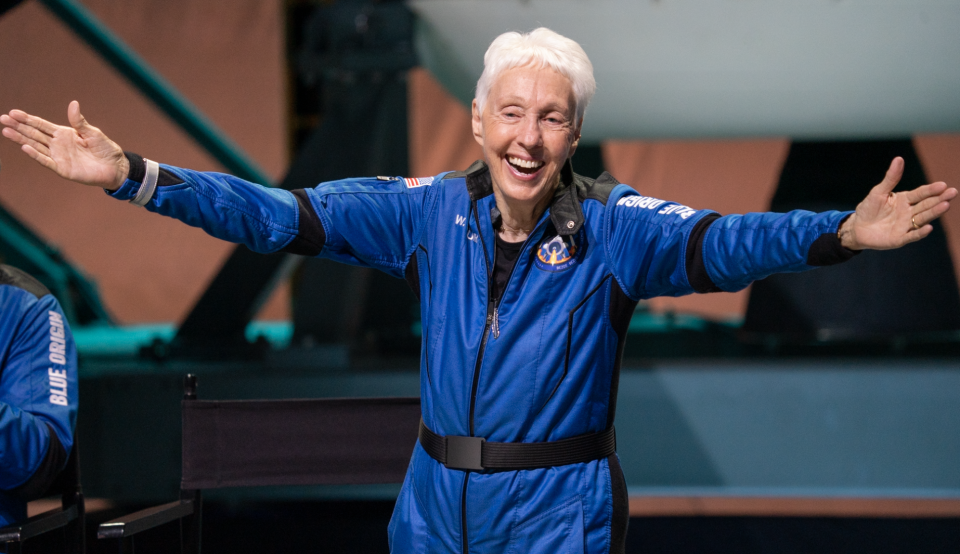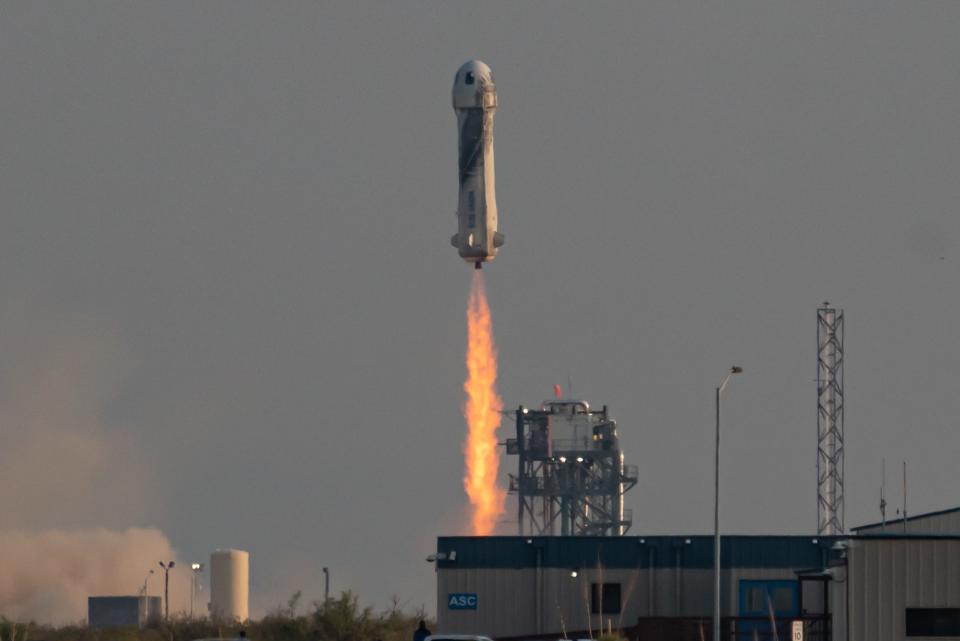Meet the Mercury 13, the first unofficial class of women astronauts
- Oops!Something went wrong.Please try again later.
In the 1960s, a group of 13 candidates endured unofficial astronaut training with the hope of being chosen for one of the new missions to Earth orbit and the moon. But at the time, they simply belonged to the wrong gender.
Now known as the Mercury 13, the group of women were organized – separate from official NASA programs and privately funded – in the early 1960s as a way to bring women into the fold. Officials putting together NASA's astronaut corps insisted candidates had to have backgrounds in military aviation, a career accessible only to men at the time.
All 13 women were pilots, but not in the military.
But despite their performance in astronaut training and open support for women in space in the 1960s and beyond, none of the Mercury 13 left the ground as part of NASA's Mercury and Apollo missions, nor were they selected for later space shuttle flights. Not until 2021 would one of the group reach their decades-long goal of spaceflight.
Trailblazer: 40 years later Sally Ride's legacy lives on through NASA's Artemis program
Women in space: 60 years ago, women broke the ceiling to space. Now more are flying with every mission
Organizing the Mercury 13
Much like the Mercury 7, men selected to fly the first American crewed missions for NASA's Project Mercury, the 13 also endured the rigors of astronaut training at sites across the country. That was by design, as the co-founder of the group, William Lovelace, actually helped develop some of the tests used for the male astronaut corps.
Lovelace and Air Force Brig. Gen. Donald Flickinger, both physicians, wanted to build on earlier speculations that women could make "good occupants for cramped space vehicles," according to NASA's history division. Their Woman in Space Program, however, wasn't part of the space agency.
In 1960, Lovelace invited award-winning pilot Jerrie Cobb to undergo the same physical tests that he helped develop for NASA's male astronauts. Though his organization was private, he was intertwined with NASA efforts to put humans in space. Cobb passed the tests, prompting Lovelace to invite more women to what would become known as the Lovelace Clinic. The candidates themselves were referred to as First Lady Astronaut Trainees, or FLATs.
The women who made up the Mercury 13 were all experienced aviators; some, like Cobb, were quite well-known at the time. Of the 19 women invited, 13 passed the same tests used for NASA's astronauts:
Myrtle "Kay" Cagle, 38, from North Carolina
Jerrie Cobb, 29, Oklahoma
Janet Dietrich, 35, California (twin sister of Marion Dietrich)
Marion Dietrich, 35, California (twin sister of Janet Dietrich)
Wally Funk, 22, New Mexico
Sarah Gorelick, 28, Kansas
Jane Hart, 40, Michigan
Jean Hixson, 39, Illinois
Gene Jessen, 24, Illinois
Irene Leverton, 34, Illinois
Bernice Steadman, 36, Michigan
Jerri Truhill, 32, Texas
Rhea Woltman, 33, Minnesota
Though their training was similar to that of the Mercury 7, the group of women had to endure the tests separately – some showed up alone or in pairs. They still largely aced the tests, but the women lacked the same kind of camaraderie available to the men who trained together. As a group, the Mercury 13 didn't meet until 1994 but many of the women already considered each other close friends.
According to NASA, the tests included: several X-rays, a four-hour eye exam, specially weighted stationary bikes used to push candidates to exhaustion, swallowing rubber tubes to test stomach acids, tilting tables to examine circulation, electric pulses to test nerve stimulation, and more. The most jarring was the eardrum test, which involved shooting ice-cold water into the ear to induce vertigo and check recovery times.
"By the end of the (testing) week, the women had no secrets from the Lovelace physicians," a NASA history page reads.
The legacy of the Mercury 13

Eileen Collins, the first woman to pilot the space shuttle in 1995 and first to command a shuttle mission four years later, said the Mercury 13 originally believed they had a serious chance at going to space.
"The women thought they were going to fly," Collins told FLORIDA TODAY. "That was never promised by NASA, but ... when they found out they weren't going to fly, they protested."
Artemis: Space seeks more inclusion, embracing women on journey back to moon
DoD move: Space Force selects Florida's Space Coast for STARCOM training headquarters
'A unique way to honor a loved one': Inside Celestis, the company sending human ashes to space
Some of the Mercury 13, including Cobb, even went as far as to testify before Congress on the topic of women in spaceflight programs. That hit especially close to home when, in 1963, Soviet Union cosmonaut Valentina Tereshkova became the first woman in space. It would take two more decades to launch the first American woman, Sally Ride, aboard the shuttle.
But for Collins, who flew four shuttle missions and still publicly advocates for women in science and technology, the Mercury 13 were a source of inspiration.
"They protested and they wanted to go, which I think was an important step because it got NASA to think about women as astronauts," Collins said. "What they did was so important for the first six women who were NASA mission specialists (in the astronaut class of 1978). NASA was comfortable in bringing women in because they knew the Mercury 13 had done so well."
"My thanks go out to (the Army's) Women Airforce Service Pilots of World War II, the Mercury 13, and the first mission specialists in the shuttle program. This was all an evolutionary bringing of women in spaceflight and it paralleled the evolutionary change in society of women becoming more involved in professional jobs," Collins said.
Only one of the Mercury 13 would go on to fly to space: Wally Funk, who in July of 2021 joined Amazon founder Jeff Bezos on the first crewed flight of Blue Origin's New Shepard rocket. The 11-minute mission that launched from Van Horn, Texas, brought decades of experiences together for Funk.
"I can't tell you (what it felt like)," Funk, 82, said after the launch, acknowledging the difficulty in describing the experience. "I felt great and like I was just laying down."
While NASA never gave Funk the chance to reach space, Bezos did.
"I want to thank you, sweetheart," Funk said to Bezos during a post-launch press briefing. "You made it possible for me. I've been waiting a long time to finally get up there."

This article originally appeared on Florida Today: Mercury 13: Meet the first unofficial class of women astronauts

